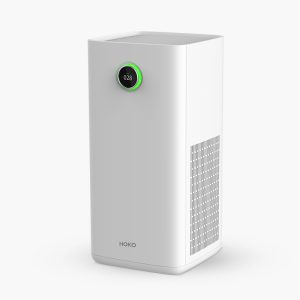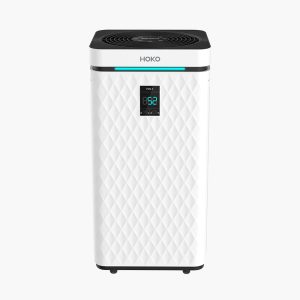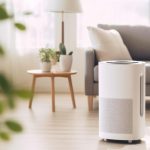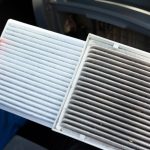In an era where air quality is becoming increasingly critical, understanding how to manage indoor pollution is essential. One of the most pressing concerns is PM2.5 particles, which are tiny pollutants that can significantly impact health. HEPA air purifiers are often touted as effective solutions for removing these particles, but how well do they actually work? This article explores the efficiency of HEPA air purifiers in tackling PM2.5 pollution, providing insights into their benefits, limitations, and usage.
What are PM2.5 Particles?
PM2.5 refers to particulate matter with a diameter of less than 2.5 micrometers. These particles are so small that they can penetrate deep into the lungs and even enter the bloodstream, leading to various health problems such as respiratory issues, cardiovascular diseases, and more. Common sources of PM2.5 include vehicle emissions, industrial processes, and residential heating.
How HEPA Filters Work
HEPA (High Efficiency Particulate Air) filters are designed to trap at least 99.97% of particles that are 0.3 microns in diameter. This size is considered the most penetrating particle size, making HEPA filters highly effective for capturing smaller and larger particles. The filters use a combination of mechanisms such as interception, impaction, and diffusion to capture particles as air passes through them.
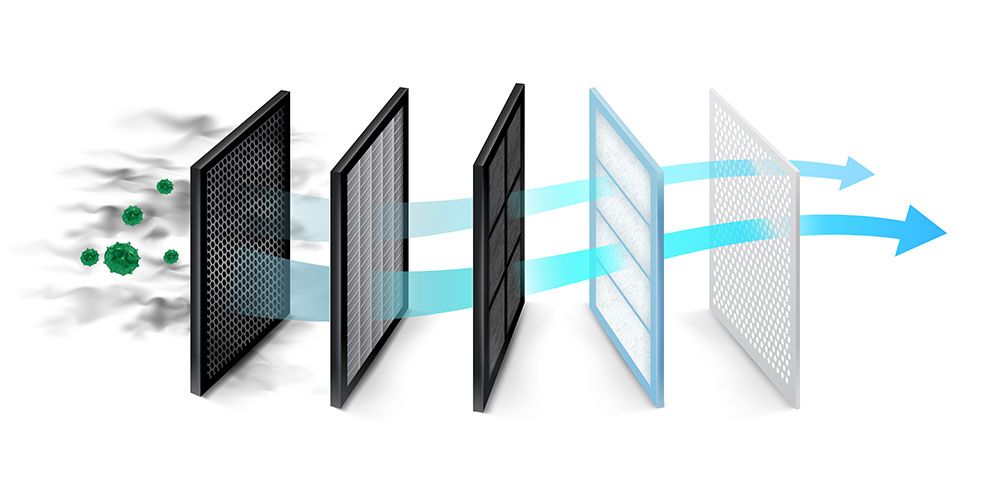
Can HEPA Filters Remove PM2.5 Particles?
HEPA filters are indeed capable of removing PM2.5 particles from the air. Given that these particles are larger than 0.3 microns, HEPA filters can effectively capture them, thereby reducing their concentration indoors. Studies and customer reviews consistently highlight the effectiveness of HEPA filters in improving air quality by significantly lowering PM2.5 levels.
Key Features of Effective HEPA Air Purifiers
- True HEPA Filters: Ensure the air purifier uses a True HEPA filter, not a HEPA-type or HEPA-like filter.
- CADR Rating: Check the Clean Air Delivery Rate (CADR) to determine the efficiency of the purifier in removing smoke, pollen, and dust.
- Room Size Compatibility: Choose a purifier suited for the size of the room to ensure optimal performance.
- Maintenance and Filter Replacement: Regular maintenance and timely filter replacements are crucial for the purifier’s effectiveness.
Benefits of Using HEPA Air Purifiers
- Health Improvements: Reduces the risk of respiratory and cardiovascular diseases by removing harmful particles.
- Allergy Relief: Helps in alleviating symptoms for allergy sufferers by trapping allergens.
- Cleaner Indoor Environment: Provides a noticeable improvement in indoor air quality, making the living space healthier.
Limitations of HEPA Air Purifiers
- No Removal of Gases: HEPA filters do not remove gases or volatile organic compounds (VOCs).
- Filter Replacement Costs: Regular replacement of filters can be costly.
- Noise Levels: Some models can be noisy, which may not be suitable for all environments.
Best Practices for Using HEPA Air Purifiers
- Placement: Position the purifier in areas where you spend the most time.
- Continuous Operation: Keep the purifier running continuously for consistent air quality improvement.
- Regular Cleaning: Maintain the purifier and replace filters as recommended by the manufacturer.
Customer Insights and Common Questions
Does a HEPA filter remove PM2.5?
Yes, HEPA filters are designed to remove particles as small as 0.3 microns, effectively capturing PM2.5 particles.
How can I reduce PM2.5 in my house?
Using HEPA air purifiers, upgrading HVAC filters, and keeping windows closed on high pollution days are effective strategies.
What do HEPA filters not remove?
HEPA filters do not remove gases or VOCs; they are specifically designed for particulate matter.
What level of PM2.5 is unhealthy?
PM2.5 levels above 35 µg/m3 over a 24-hour period are considered unhealthy and can exacerbate health issues.
Deep Dive into HEPA Filter Efficiency
HEPA air purifiers have gained popularity due to their high efficiency in removing airborne particles. The ability of HEPA filters to trap PM2.5 particles has been backed by numerous studies and real-world applications. For instance, research has shown that homes using HEPA air purifiers have significantly lower concentrations of PM2.5 particles compared to those without. This reduction in particulate matter directly correlates with a decrease in health risks associated with long-term exposure to air pollution.
Understanding the Technical Aspects
The construction of HEPA filters involves a dense mat of fibers arranged in a way that traps particles through various physical mechanisms. The primary methods include:
- Interception: Particles following a stream of air come within one radius of a fiber and adhere to it.
- Impaction: Larger particles are unable to avoid fibers by following the curving contours of the air stream and are forced to embed into one of them directly.
- Diffusion: Smaller particles, especially those below 0.1 microns, collide with gas molecules and are effectively trapped by the fibers due to their random motion.
These combined mechanisms make HEPA filters exceptionally effective in capturing particles of varying sizes, ensuring that even the finest pollutants, like PM2.5, are effectively removed from the air.
Enhancing the Effectiveness of HEPA Air Purifiers
To maximize the benefits of HEPA air purifiers, it’s essential to consider additional features and practices:
- Activated Carbon Filters: While HEPA filters handle particulate matter, activated carbon filters can adsorb gases and odors, providing a more comprehensive air purification solution.
- UV-C Light: Some advanced purifiers incorporate UV-C light to kill bacteria and viruses, enhancing the overall air quality.
- Smart Sensors and Automation: Modern air purifiers equipped with smart sensors can detect air quality levels and adjust their operation accordingly, ensuring optimal performance with minimal user intervention.
Comparative Analysis with Other Air Purification Technologies
While HEPA filters are highly effective, it’s worth comparing them with other air purification technologies:
- Ionizers: These devices release ions that attach to particles, causing them to settle out of the air. However, they do not remove particles from the environment and may produce ozone, a harmful byproduct.
- Electrostatic Precipitators: These use electrical charges to capture particles on collector plates. They can be effective but often require regular cleaning and maintenance.
- Ozone Generators: These are intended to remove odors and certain pollutants but can produce high levels of ozone, which is detrimental to health.
Conclusion
HEPA air purifiers are highly effective in removing PM2.5 particles, significantly improving indoor air quality and contributing to better health outcomes. By understanding their benefits, limitations, and best practices, you can make an informed decision about incorporating a HEPA air purifier into your home or office.
